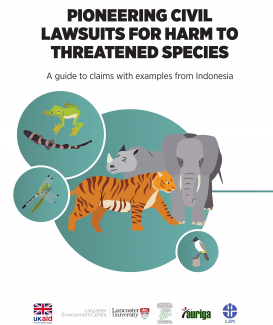
Actions such as illegal wildlife trade, deforestation, mining and pollution are often responsible for huge and diverse harms to the environment—including particular impacts on threatened species. Faced with growing concern about the biodiversity crisis, including reports that at least one million species are at risk of extinction, there are growing demands for social and environmental justice. This includes redoubling efforts to hold responsible parties accountable, and to deter future harmful actions. Importantly, there is also a need for legal responses that are proportional to the scales of environmental harm, and for new strategies to remedy the environment when harm occurs.
This resource helps to conceptualise environmental harm and the remedies it requires. It proposes a pioneering approach for how civil lawsuits could be used to provide environmental remedies—including for harm to threatened species. It is intended for a broad, global audience of academics, NGOs, government officials, prosecutors, and judges and academics who are faced with the challenges of developing, ruling on, and studying environmental lawsuits. The guide uses the example of Indonesia to introduce key concepts and procedures important to conceptualising harm and remedies, and to developing lawsuits. As such, it includes country-specific details, but seeks to present these in a way that will be useful to colleagues working across jurisdictions.
This project was funded by the UK Government through the Illegal Wildlife Trade Challenge Fund.